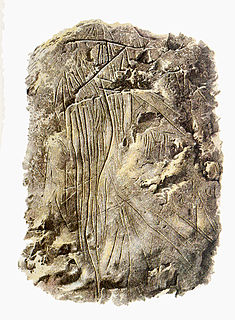 W
WThe geology of Bosnia & Herzegovina is the study of rocks, minerals, water, landforms and geologic history in the country. The oldest rocks exposed at or near the surface date to the Paleozoic and the Precambrian geologic history of the region remains poorly understood. Complex assemblages of flysch, ophiolite, mélange and igneous plutons together with thick sedimentary units are a defining characteristic of the Dinaric Alps, also known as the Dinaride Mountains, which dominate much of the country's landscape.
 W
WFollowing is a list of caves in Bosnia and Herzegovina. Most of the country's caves belong to Dinaric Alps system and are karst caves, with complex karstic features and endemic biodiversity.
 W
WFollowing is a list of karst springs in Bosnia and Herzegovina. Most of the country's karstic wellsprings belong to Dinaric Alps systems of limestone, flysch, and/or their tectonic contact zone. These are almost regularly large founts in hydrogeological terms, with large average annual discharges, and with extremely high amplitudes between minimum and maximum discharge, depending on seasonal flow, precipitation, other various hydrological parameters and sometimes anthropological impacts. Waters often emerging from large karst caves, in many cases with complex underground flow, various characteristic karstic features and endemic biodiversity, creating short river courses with relatively large water discharge.
 W
WBadanj Cave is located in Borojevići village near the town of Stolac, Bosnia and Herzegovina. This rather small cave has come to public attention after the 1976 discovery of its cave engravings, that date to between 12,000 and 16,000 BC.
 W
WLivanjsko polje, located in Bosnia and Herzegovina, is the largest polje in the world. A typical example of karst polje encircled by tall peaks and mountain ranges, the field is characterized by many unique natural phenomenons and karstic features.
 W
WThe Pannonian Basin, or Carpathian Basin, is a large basin in Central Europe. The geomorphological term Pannonian Plain is more widely used for roughly the same region though with a somewhat different sense, with only the lowlands, the plain that remained when the Pliocene Epoch Pannonian Sea dried out.
 W
WPopovo field is a polje in Bosnia and Herzegovina, located in a southernmost region of the country, near the Adriatic coast. Its size is 5.9 square kilometres (2.3 sq mi).
 W
WVilina Pećina is a cave and a karst resurgence wellspring in Dinaric Alps karst of Bosnia and Herzegovina, also previously known from research descriptions of older date as "Vilić Pećina", such as one from 1896, conducted by Austria-Hungary geologists.
 W
WVjetrenica Cave is the largest cave in Bosnia and Herzegovina, and the most biodiverse cave in the world. It is part of the Dinaric Alps mountain range, which is known for its karstic and speleological features. The cave is located in the Popovo field in Ravno, East Herzegovina in the Federation of Bosnia and Herzegovina.